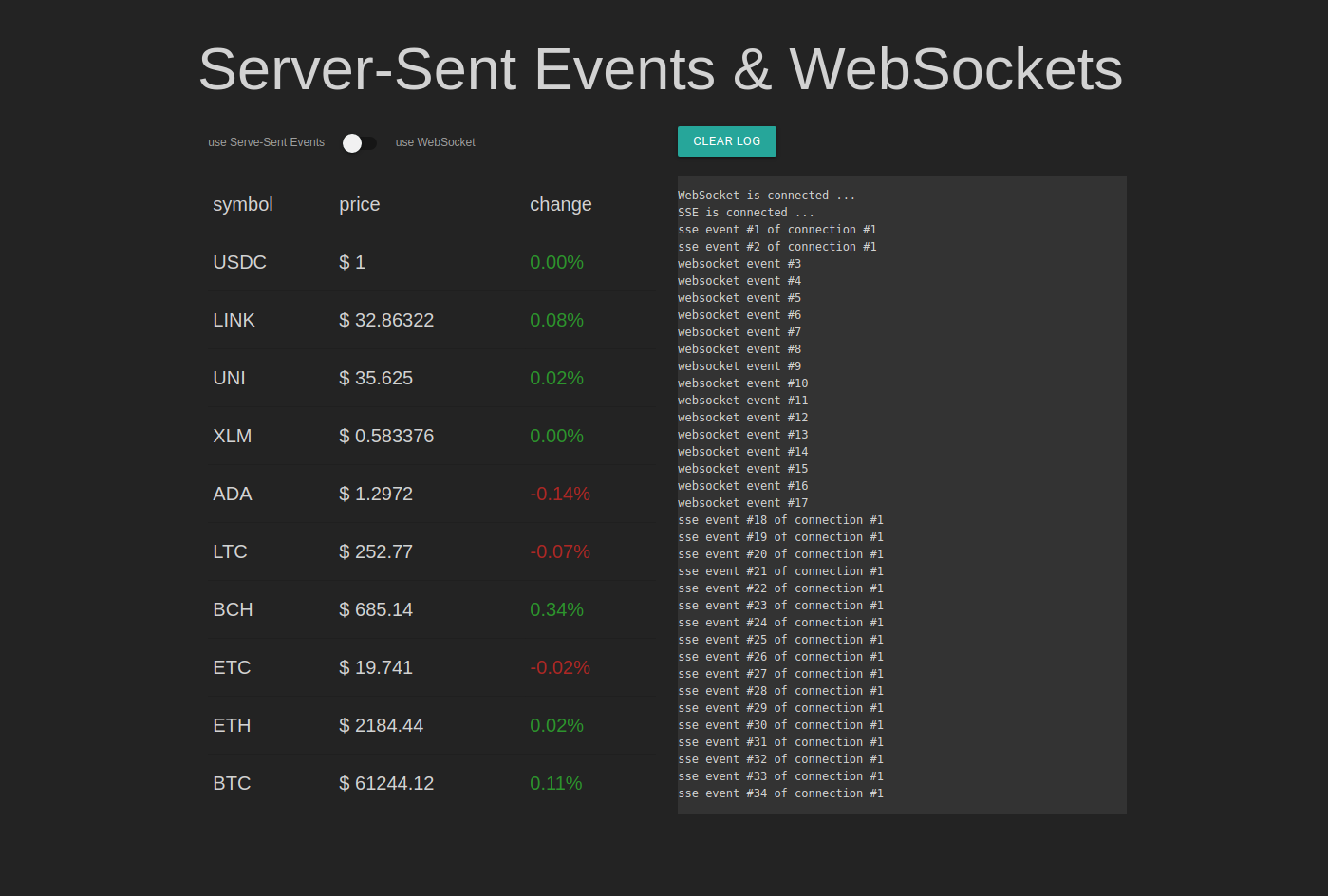This is a simple demonstration of Server-Sent Events & WebSockets based on a Node.js backend and a HTML/JS frontend.
Server-Sent events (SSE) is a specification for implementing server-side push events to web frontend applications, through plain-old HTTP.
This is best contrasted with WebSockets, which offer a full-duplex messaging channel over a custom protocol, operating within a single TCP connection w/ an HTTP-compatible handshake.
clone the project and perform the following commands
npm install
node server.js
Navigate to http://localhost:8000 and watch crypto rise 🚀🚀🚀
On this page you have the opportunity to switch between SSE and WebSockets for ticker events. It will do the same thing, but with the two different technologies.
- for SSE the client opens a connection to
/eventsendpoint, which the server keeps open - for WebSockets, a connection to
http://localhost:40510is used
- Transported over simple HTTP instead of a custom protocol
- Can be poly-filled with javascript to "backport" SSE to browsers that do not support it yet.
- Built in support for re-connection and event-id
- try restarting our Node.js server.
- when using SSE, the tick events will work great again
- with the switch set to WebSockets, thats not the case
- No trouble with corporate firewalls doing packet inspection
- Ideally used for stock ticker or browser notifications
- Real time, two directional communication.
- Native support in more browsers
- Supports binary data as well
- No connection limit
- SSE is limited to 6 connections per browser + domain
- Ideally used for chat applications
💎👐💎
